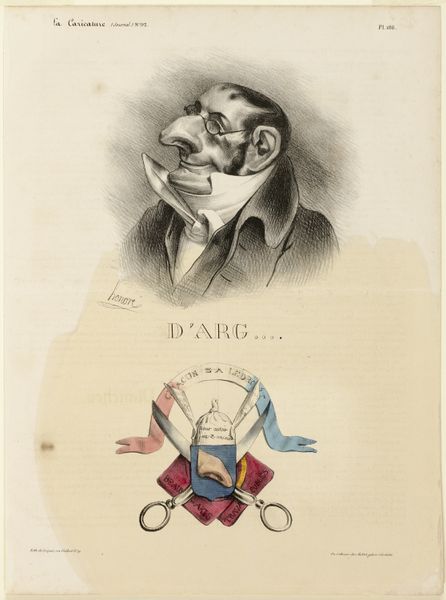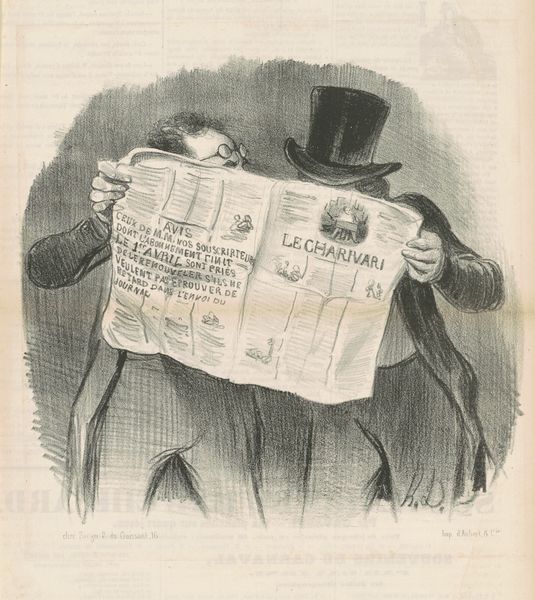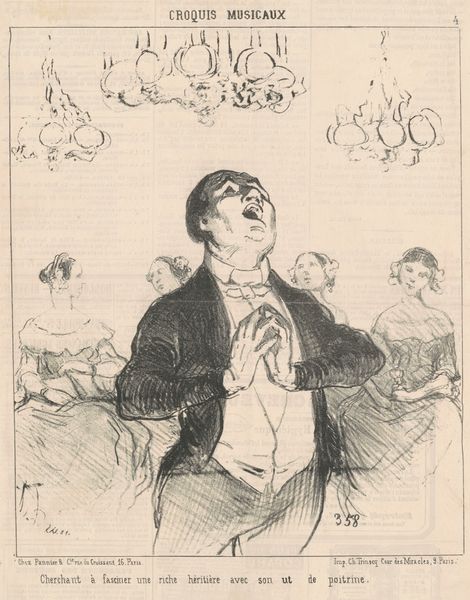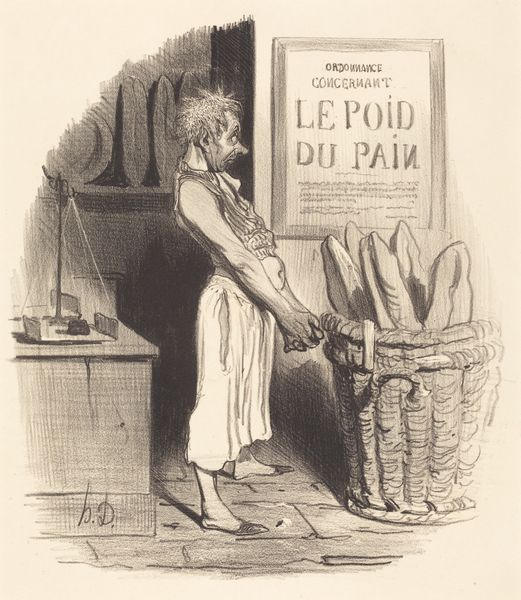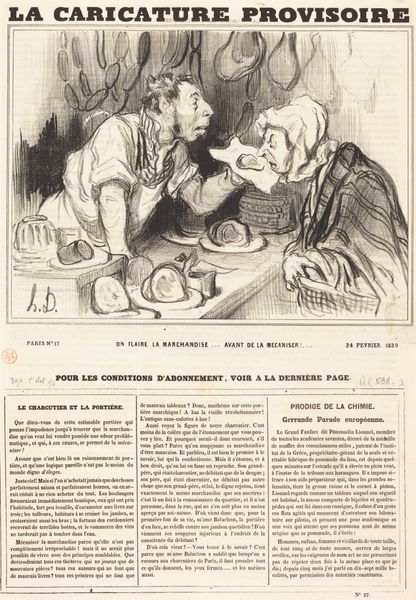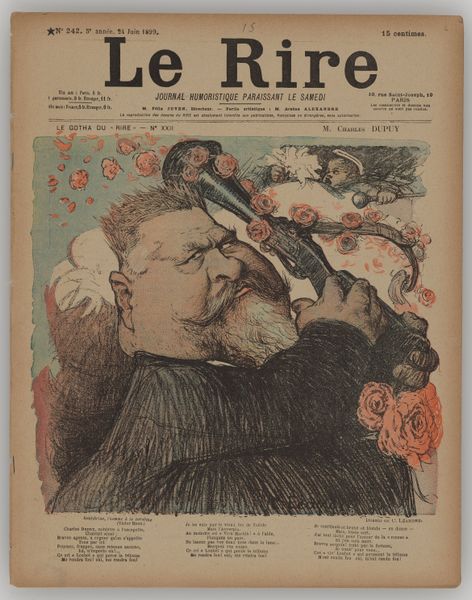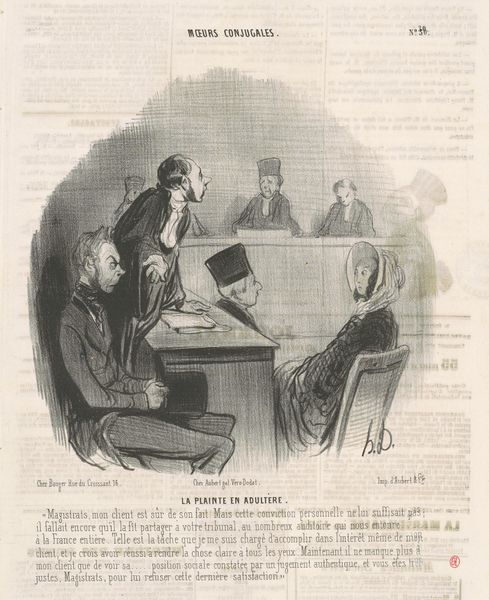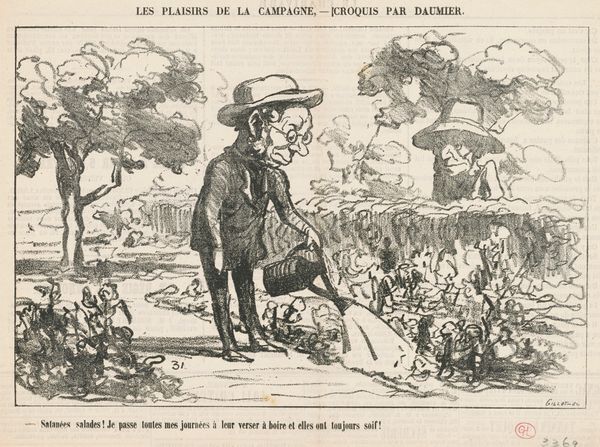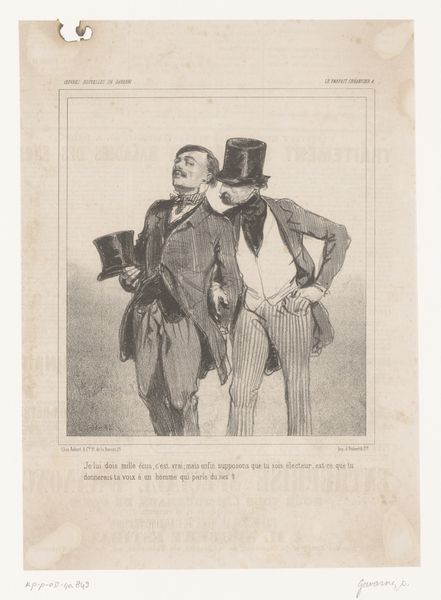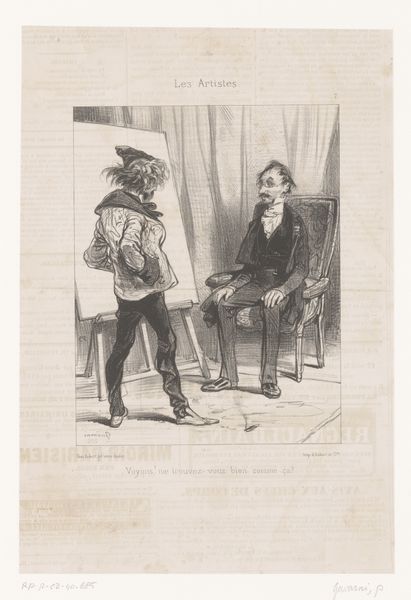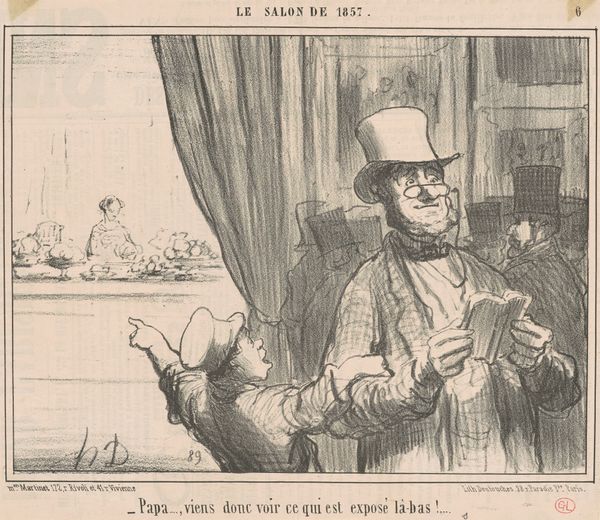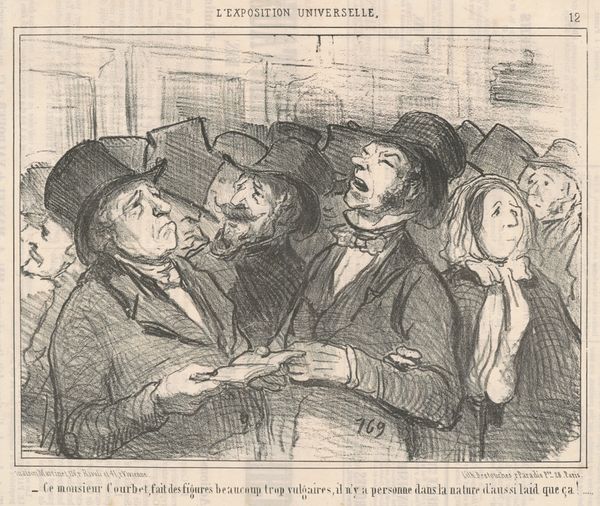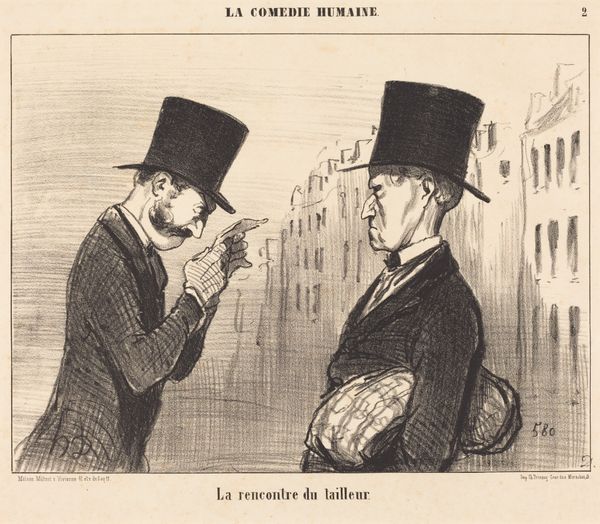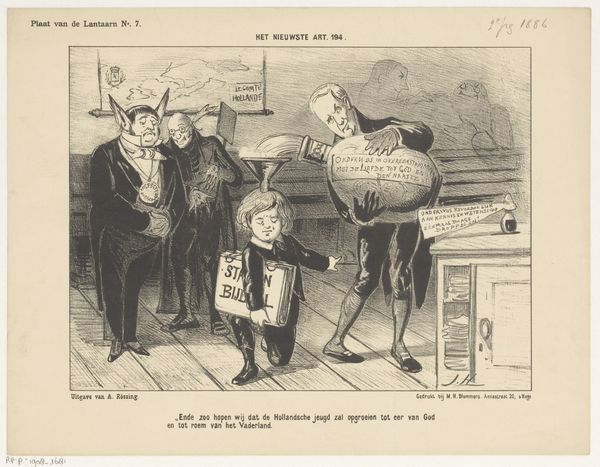
lithograph
#
portrait
#
imaginative character sketch
#
quirky sketch
#
lithograph
#
impressionism
#
caricature
#
sketch book
#
figuration
#
personal sketchbook
#
idea generation sketch
#
sketchwork
#
journal
#
sketchbook drawing
#
storyboard and sketchbook work
#
sketchbook art
Copyright: Public domain
This is André Gill’s caricature of Étienne Mélingue, a French actor, sculptor, and painter, printed in 1867. Here, Mélingue is portrayed with exaggerated features, common in caricature, alongside the moon with a human face, a symbol for the newspaper "La Lune" itself. Note the moon, a motif deeply rooted in human history. As civilizations have risen and fallen, the moon has symbolized cyclical change, mystery, and the feminine principle, its symbolic presence stretches from ancient Babylonian myths to modern-day art. The sword beside Mélingue, while possibly referencing one of his theatrical roles, also carries weight. Swords have been symbols of power, justice, and defense across cultures from the Bronze Age to Medieval Europe. Consider the emotional weight of these symbols; the reassuring cycle of the moon set against the potent, decisive nature of the sword. Such symbols are never static, their meanings evolving as they resurface time and again in our collective consciousness. They remind us that we are all connected to the past, present, and future.
Comments
No comments
Be the first to comment and join the conversation on the ultimate creative platform.
